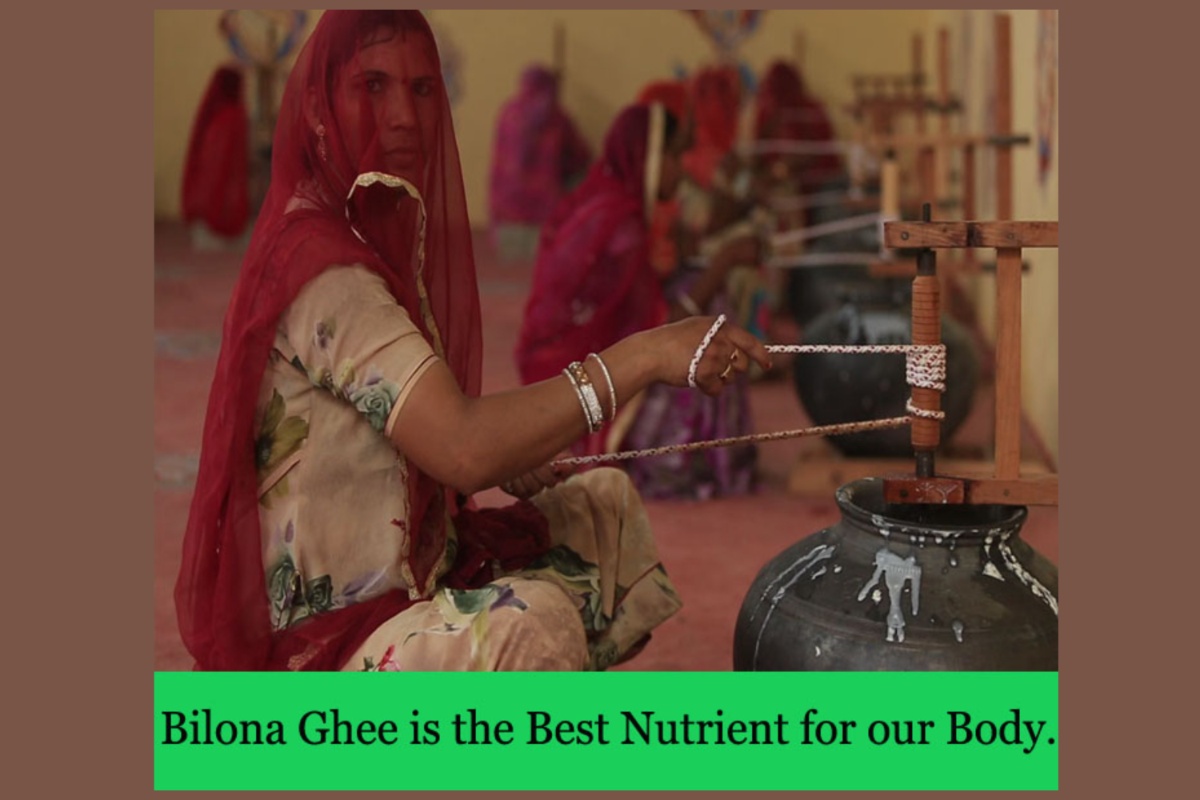Traditional product making processes

There’s no denying that we all are living in ‘urgent’ times. The pace of our life is nothing but superfast and the thousands of things to do in a day don’t leave us much time to cook.
And the result?
Our increasing dependence on processed and packaged foods either ordered at home or bought at restaurants. This often leads to one complaining about feeling sluggish and fatigued, which in turn affects your productivity at work.
You don’t need to stop working and spending all your time cooking to break this cycle. All you need to do is to make a smart choice and opt for products made using traditional processes.
This blog is a great place to know some of these age-old product processes and how consuming these products help you stay strong, healthy, and energetic.
The Bilona method of making ghee
No Indian meal is complete without a spoonful of ghee. This fragrant and delicious dollop is enough to elevate the taste of any dish. Ghee was traditionally made at home through a complex process known as bilona. However, the growing demand for ghee gave way to its commercial production where ghee is mass-produced and available in plastic bottles. In fact, some ghee brands also offer ghee made from cream instead of curd.
Ghee is hardly made at home, especially in urban areas.
Wondering what the bilona method is? This process involves:
- Procuring high-quality A2 milk from grass-fed cows.
- Boil the milk to sterilize it and improve its concentration.
- Adding a spoonful of curd to this milk and storing it overnight at room temperature.
- This is then churned using a wooden spoon known as bilona with a rope tied around it. This churning, done in anti-clockwise and clockwise motions, is a time-consuming process.
- The milk then separates into butter and buttermilk.
- The butter is then scooped out and boiled to get pure ghee. While the milk solids settle at the bottom, clarified ghee floats to the top.
Let’s look at the difference between pure bilona ghee and regular ghee:
Bilona ghee | Regular ghee |
Made through the traditional Bilona process that includes boiling, curdling, and hand-churning | Made using machines and high heat |
Contains no chemicals, additives, toxins, or preservatives | Contains preservatives for extended shelf life |
Made with the milk of grass-fed cows | May be made with the milk of cows that are injected with hormones for increasing their milk production |
Benefits of Bilona ghee over processed ghee:
- Makes your immune system stronger.
- Helps you lose weight.
- Detoxes your body.
- Improves your energy levels and reduces fatigue.
- Hydrates your skin.
- Heals cuts, scrapes, and wounds.
The stone-grinding process of making flour
The process of stone-grinding flour is nothing new. It has been used for thousands of years and continues to be the popular method of making flour, especially in rural areas.
Here is what the process includes:
- Two large pieces of stone mills are paired together.
- The whole wheat grains including the bran, germ, and endosperm are put between the two stones and ground.
- This process leads to the inclusion of more bran and wheat germ in the flour.
How is stone ground flour different from regular flour:
Stone ground flour | Regular flour |
Made using millstones | Produced using rollers in factories |
Coarser texture | Finer texture |
Better flavor | Processed flavor |
Since it has intact bran and wheatgerm, it is a healthier option | This process uses more heat, which destroys most of the nutrition |
Benefits of stone ground flour over regular flour:
- More fiber content, which helps in weight loss and better digestion.
- Doesn’t spike your blood sugar levels.
- Prevents inflammation.
- Better for artisanal bakery products.
- Lowers cholesterol and prevents the risk of heart problems.
The hand-pounding process of dehusking rice
Rice is not just a staple in our cooking but also immensely loved. There’s an amazing array of dishes that one can make with rice including desserts and savory things. For your dishes to be delicious, your rice needs to be of great quality too. And, what’s better than hand pounded rice? Also known as Dheki rice, Dhampudu Biyyam, and Hath Sadi Tandul, this rice is loved for its excellent flavors and higher nutrition.
Let’s look at the process of dehusking rice through this process:
- The rice is pounded using the traditional apparatus known as dheki.
- The rice is pounded with a wooden hammer along with a wooden log to deshusk it.
- The result is smaller pieces of rice, but mostly healthy and delicious.
Difference between hand-pounded and regular rice:
Hand-pounded rice | Regular rice |
Unpolished rice without any chemicals or toxins | May contain harmful chemicals |
Light brown color | Pure white |
Coarse texture | Finer and smoother texture |
Sweetish taste | Hardly any taste on its own |
Benefits of hand-pounded rice:
- Regulates cholesterol and keeps your heart healthy.
- Good for memory.
- Good for diabetics as it doesn’t cause blood sugar level spikes.
- Prevents digestive issues.
- Keeps your teeth and bones healthy.
- Prevents anemia and fatigue.
Conclusion
These traditional processes of making food are not just a great way to stay in touch with your roots but also to enjoy the wholesome nutrition that foods are meant to offer. Now, you don’t need to go looking for these foods. Adya Organics offers a huge range of flours and grains made using centuries-old processes right at your doorstep. Get in touch with us to make a smart food swap and rejuvenate your and your family’s health.
